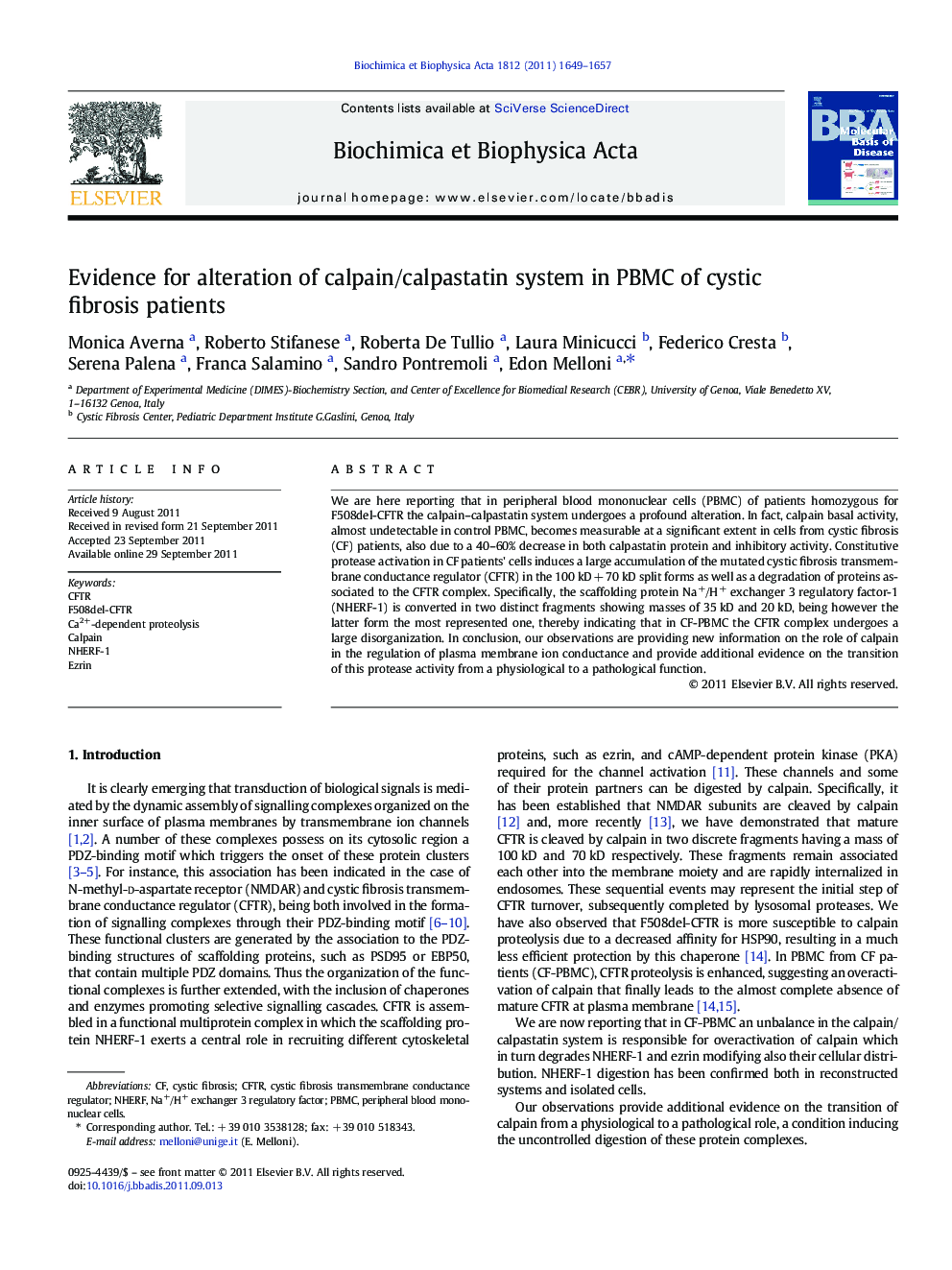| Article ID | Journal | Published Year | Pages | File Type |
|---|---|---|---|---|
| 1904936 | Biochimica et Biophysica Acta (BBA) - Molecular Basis of Disease | 2011 | 9 Pages |
We are here reporting that in peripheral blood mononuclear cells (PBMC) of patients homozygous for F508del-CFTR the calpain–calpastatin system undergoes a profound alteration. In fact, calpain basal activity, almost undetectable in control PBMC, becomes measurable at a significant extent in cells from cystic fibrosis (CF) patients, also due to a 40–60% decrease in both calpastatin protein and inhibitory activity. Constitutive protease activation in CF patients' cells induces a large accumulation of the mutated cystic fibrosis transmembrane conductance regulator (CFTR) in the 100 kD + 70 kD split forms as well as a degradation of proteins associated to the CFTR complex. Specifically, the scaffolding protein Na+/H+ exchanger 3 regulatory factor-1 (NHERF-1) is converted in two distinct fragments showing masses of 35 kD and 20 kD, being however the latter form the most represented one, thereby indicating that in CF-PBMC the CFTR complex undergoes a large disorganization. In conclusion, our observations are providing new information on the role of calpain in the regulation of plasma membrane ion conductance and provide additional evidence on the transition of this protease activity from a physiological to a pathological function.
► The calpain–calpastatin system is unbalanced in PBMC of F508delCFTR homozygotes. ► NHERF-1 is also degraded in PBMC from CF patients, but not in heterozygous. ► Calpain is responsible for digestion of CFTR associated proteins, including ezrin. ► The rate of this proteolysis is highly increased in PBMC of CF patients. ► The NHERF-1 digestion is the marker of a pathological calpain function.
